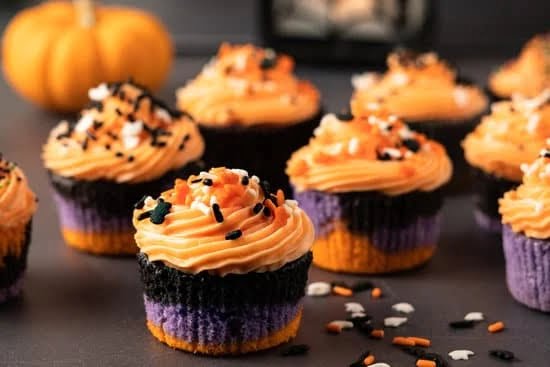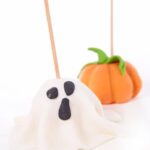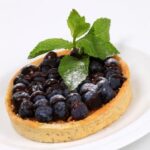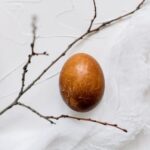Are you wondering what flowers are safe for cake decorating? Using flowers to decorate cakes can add a beautiful and elegant touch to any special occasion.
However, it is important to ensure that the flowers used for cake decoration are safe to consume. In this article, we will delve into the importance of using safe flowers for cake decorating, identify common edible flowers for cake decoration, highlight non-edible flowers that should be avoided, discuss safety precautions, explore alternative decorative options, and provide insights from professional cake decorators on using flowers for cake decoration.
When it comes to cake decorating, the use of edible flowers has become increasingly popular. Not only do they enhance the visual appeal of the cake, but they also offer a delightful and natural flavor. However, not all flowers are safe for consumption. It is crucial to be aware of which flowers are edible and safe to use in cake decorating to avoid any potential health risks.
In addition to identifying the types of edible flowers that are commonly used in cake decoration, we will also discuss safety precautions and best practices for using fresh flowers on cakes. By following expert recommendations and understanding the importance of selecting safe flowers for cake decorating, you can ensure that your decorative elements not only look stunning but are also safe to consume.
Types of Edible Flowers
Roses
Roses are one of the most popular and versatile edible flowers for cake decoration. They come in a variety of colors, including red, pink, white, and yellow, making them suitable for any cake theme or color scheme. Before using roses on a cake, it’s important to remove the white bitter base at the end of the petals as it can have an unpleasant taste.
Violets
Violets are another common edible flower used for cake decoration. These delicate purple flowers add a pop of color and a subtle floral flavor to cakes. Violets can be crystallized or used fresh on cakes to create a beautiful and dainty appearance. However, it’s essential to ensure that the violets used for cake decorating have not been treated with pesticides.
Lavender
Lavender is known for its fragrant aroma and calming properties, and it is also a popular choice for decorating cakes. The tiny purple buds of lavender can be used to infuse cakes with a subtle floral flavor or as an elegant decorative element. When using lavender for cake decoration, it’s crucial to source organic flowers that have not been sprayed with any chemicals.
When considering what flowers are safe for cake decorating, it’s important to choose edible options that have not been treated with chemicals or pesticides. Roses, violets, and lavender are just a few examples of popular edible flowers that can safely be used for adorning cakes. However, always ensure proper preparation and sourcing of these flowers to guarantee their safety for consumption when used in cake decorating.
Non-Edible Flowers
When it comes to decorating cakes with flowers, it is important to be mindful of the types of flowers that are safe for consumption. While some flowers are edible and can be used to enhance the beauty of a cake, there are also non-edible flowers that should be avoided in cake decorating. It is crucial to understand which flowers fall into this category in order to ensure the safety of those who will be consuming the cake.
Non-edible flowers include those that may contain toxins or chemicals that are harmful when ingested. Some common non-edible flowers that should not be used for cake decorating include:
- Hydrangeas
- Buttercups
- Daffodils
- Lilies
- Poppies
These flowers can pose health risks if consumed, and therefore should never be used as decorative elements on cakes. It’s important for bakers and decorators to familiarize themselves with the list of non-edible flowers and exercise caution when selecting floral decorations for their cakes.
In addition to avoiding non-edible flowers, it is also essential to refrain from using any type of flower that has been treated with pesticides or other chemicals. Even edible flowers can become unsafe for consumption if they have been exposed to harmful substances. With proper knowledge and awareness, decorators can ensure that they are only using safe and edible flowers for cake decoration, thus prioritizing the well-being of those who will enjoy the finished product.
Safety Precautions
When it comes to using flowers for cake decoration, it’s crucial to prioritize food safety. Not all flowers are safe for consumption, so it’s important to exercise caution and follow some key guidelines to ensure that the flowers used for cake decorating are indeed safe to eat.
First and foremost, it’s essential to use edible flowers when decorating cakes. Some popular and safe edible flowers for cake decoration include roses, violets, pansies, and lavender. These flowers not only add a beautiful touch to cakes but are also safe for consumption.
In addition to using edible flowers, it’s crucial to ensure that the flowers have not been treated with any chemicals or pesticides that could be harmful if ingested. When sourcing flowers for cake decoration, it’s best to purchase them from reputable sources that specifically offer edible flowers. Alternatively, you can also opt to grow your own edible flowers in a pesticide-free environment.
Finally, before placing any flowers on a cake, make sure to thoroughly wash and inspect them for any signs of contamination. It’s also advisable to remove pistils and stamens from the flowers before using them on cakes, as these parts can contain pollen which might cause allergic reactions in some individuals.
| Edible Flowers | Safety Precautions |
|---|---|
| Roses | Thoroughly wash and inspect before use |
| Violets | Remove pistils and stamens before placing on cakes |
| Pansies | Purchase from reputable sources offering edible flowers |
Best Practices for Using Fresh Flowers on Cakes
Inspecting and Preparing Edible Flowers
When using fresh flowers for cake decoration, it is essential to carefully inspect and prepare the edible flowers before placing them on the cake. Start by selecting flowers that are organic or pesticide-free to ensure they are safe for consumption.
Once you have chosen the edible flowers, gently wash them in cold water to remove any dirt or debris. It is also recommended to trim the stems and remove any parts of the flower that may not be safe to eat, such as stamens or pistils.
Proper Placement of Fresh Flowers on Cakes
After preparing the edible flowers, it’s important to consider how to properly place them on the cake. When placing fresh flowers on a cake, it is best to do so at the last minute to maintain their freshness.
Carefully arrange the flowers in a visually appealing way, ensuring that they are evenly distributed on the cake. If you plan to place flowers directly onto the frosting, make sure they are secure and won’t wilt or droop onto the cake.
Edible Flower Drying Techniques
In some cases, you may want to use dried edible flowers for cake decoration instead of fresh ones. To do this, carefully dry your selected edible flowers by hanging them upside-down in a dark, dry area for 1-2 weeks depending on flower type. Once fully dried, store your edible blooms in an airtight container away from sunlight until ready for use on your cake.
By following these best practices for using fresh flowers on cakes, you can ensure that your floral decorations not only look beautiful but are also safe for consumption.
Alternative Decorative Options
When it comes to decorating cakes, using flowers is a popular choice for adding a natural and elegant touch. However, for those looking for alternative options, there are various creative and safe decorative choices available. Whether you’re avoiding flowers due to allergies or simply want to explore different cake decorating ideas, here are some alternative options to consider:
- Fruit Decorations: Fresh fruits such as berries, kiwi slices, and citrus wedges can be used to add vibrant colors and a refreshing taste to cakes. They can be arranged in patterns or placed strategically on the cake for a visually appealing design.
- Chocolate Garnishes: Chocolate can be molded into intricate shapes or drizzled over the cake for a decadent and indulgent decoration. From chocolate curls to elaborate designs made with melted chocolate, the possibilities are endless.
- Edible Glitter and Sprinkles: Add a touch of sparkle and fun to your cakes with edible glitter and colorful sprinkles. These additions not only bring visual appeal but also offer an extra layer of texture and flavor.
These alternative decorative options provide versatility and creativity when it comes to cake decorating. They can cater to different preferences, dietary restrictions, or themes without compromising on safety or aesthetics. Whether used individually or in combination, these alternatives offer an opportunity to experiment with unique and personalized cake designs that are just as eye-catching as floral decorations.
In addition to the aforementioned options, other safe decorative choices include edible metallic elements like gold leaf or silver dust, fondant cutouts or figurines, and even custom printed wafer paper designs. These options allow decorators to customize cakes according to specific themes or occasions while ensuring that the decorations are entirely safe for consumption.
Expert Recommendations
When it comes to using flowers for cake decoration, it is crucial to seek expert recommendations and advice from professional cake decorators. These individuals have the knowledge and experience to guide you on the best practices for selecting and using safe flowers for cake decorating.
Professional cake decorators emphasize the importance of using only edible flowers for cake decoration. While there are many beautiful flowers that can be used to adorn cakes, not all of them are safe for consumption. It is essential to do thorough research or consult with an expert to identify which flowers are safe to use for decorating purposes.
In addition, professional cake decorators often recommend purchasing edible flowers from reputable suppliers or vendors. This ensures that the flowers have been grown and handled in a way that meets food safety standards. By obtaining edible flowers from trusted sources, you can have peace of mind knowing that they are safe to use for cake decoration.
Furthermore, professional cake decorators advise on proper techniques for preparing and placing fresh flowers on cakes. It is important to thoroughly wash and remove any non-edible parts of the flower before placing them on a cake. Additionally, some decorators suggest using a barrier, such as parchment paper or edible glue, between the fresh flowers and the frosting to prevent direct contact.
By following the insights and advice from professional cake decorators, you can ensure that you are selecting and using safe flowers for cake decorating. Their expertise can help you navigate the world of floral decoration, allowing you to create stunning and safe designs for your cakes.
Conclusion
In conclusion, when it comes to cake decorating, it is essential to prioritize the safety of your guests by using only flowers that are safe for consumption. As highlighted in this article, identifying edible flowers and avoiding non-edible ones is crucial in ensuring the safety of your cake decorations. By understanding the types of edible flowers and taking necessary safety precautions, you can confidently incorporate beautiful floral decorations into your cakes without any health concerns.
Remember, safety precautions such as thoroughly washing and properly preparing fresh flowers are equally important when it comes to cake decorating. It is also imperative to seek expert recommendations from professional cake decorators on using flowers for cake decoration, ensuring that you are following best practices. Additionally, considering alternative decorative options besides flowers can also provide a creative and safe way to decorate your cakes while still achieving stunning visuals.
In summary, by recognizing the importance of selecting safe flowers for cake decorating and following best practices for their use, you can create breathtaking and safe floral-adorned cakes that will impress your guests without compromising their well-being. With a thorough understanding of what flowers are safe for cake decorating and implementing the recommended safety measures, you can enjoy the beauty of floral decorations on your cakes with confidence.

Welcome to our cake decorating blog! My name is Destiny Flores, and I am the proud owner of a cake decorating business named Cake Karma. Our mission is to provide delicious, beautiful cakes for all occasions. We specialize in creating custom cakes that are tailored specifically to each customer’s individual needs and tastes.





